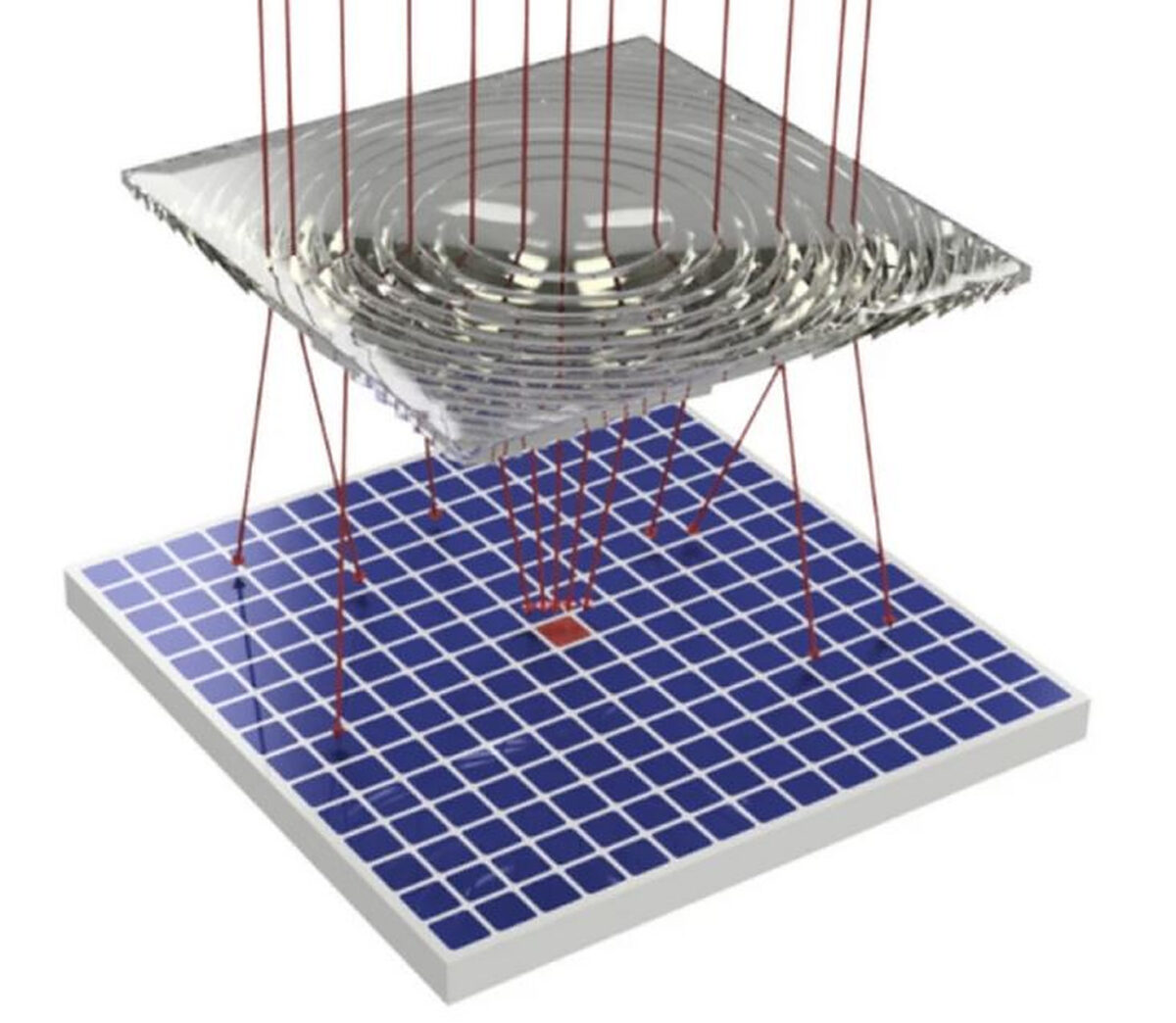A research team in Taiwan claims to have discovered the cause of inherent light leakage in high-concentration photovoltaic (HCPV) systems that use a Fresnel lens as a focusing lens.
The scientists said that HCPV systems combined with the Fresnel lens are able to absorb sunlight even under cloudy weather conditions and that, however, these devices suffer from light leakages.
“Fresnel lenses are designed to significantly reduce the weight of the lens so that it can meet the requirements of a sun-tracking system,” they stated. “However, unlike conventional lenses, non-smooth and non-continuous lens surfaces distributed in multiple segments may cause inevitable significant light leakage due to manufacturing errors such as the radii of curvature and draft angles of the fabricated Fresnel lenses.”
The researchers assumed the use of a Fresnel lens with a width of 129 mm and a thickness is 1.81 mm. They considered a focusing area with a size of 1.1 mm × 1.1 mm, a power ratio of focus of 63%, and a light leakage ratio outside the focusing area of 37%. They also measured the light energy in the light leakage area of Fresnel lenses with different structures under monochromatic light irradiation and used diffuse plates with varying penetration rates to mimic the outdoor conditions of different cloud layer thicknesses.
Based on the results of this simulation, the group was able to design an HCPV system that can reportedly offer good performance even under a cloudy sky. It includes a 2 × 2 Fresnel lens array on a box with two rotation dimensions that can be manually adjusted to face directly toward the sun at any time. The PV unit relies on a high-efficiency solar panel based on III-V materials at the focus point and polycrystalline solar cells placed around it.
“The light leakage from the Fresnel lens structure and the scattered light from the sunlight passing through the clouds can be directed to the polycrystalline silicon-based solar panel for power generation,” the academics said. “When the sky is clear, the light is concentrated on the high-efficiency solar cell, so the power generation efficiency is high. In a heavy cloud, the sunlight cannot be concentrated on the high-efficiency solar cell, so a conventional HCPV cannot effectively generate electricity, but this design can still generate electricity by polycrystalline solar panels.”
Through the simulation, the Taiwanese group was able to ascertain that the Fresnel lens may reach an illuminance of about 20,000 to 40,000 lx in the light leakage region, whether it is a sunny day or a cloudy day with different cloud thicknesses.
The research team presented the HCPV system in the study “Hybrid high-concentration photovoltaic system designed for different weather conditions,” which was recently published in Scientific Reports.
The group includes scientists from Taiwan's National Central University and the National Yang Ming Chiao Tung University.
“The proposed novel solar power system is useful for reaching optimal solar power generation under different cloudy skies,” they concluded.
This content is protected by copyright and may not be reused. If you want to cooperate with us and would like to reuse some of our content, please contact: editors@pv-magazine.com.




I still don’t get it. Light paper centered on concord on making a bunch of Fresnel lenses practically? Their idea of GaAs/CIGS/Xtalline Si cells 1.1 mm square at a time to catch the conc. sun and polycrystalline Si or clear/void for agriculture around it is good. I hope the practical versions turn out as good; all fun to cover a large area until the cover also has to track the sun and permit pollination and harvest. How do you even make low profile heatsinks for those 1.1 mm sq. cells?